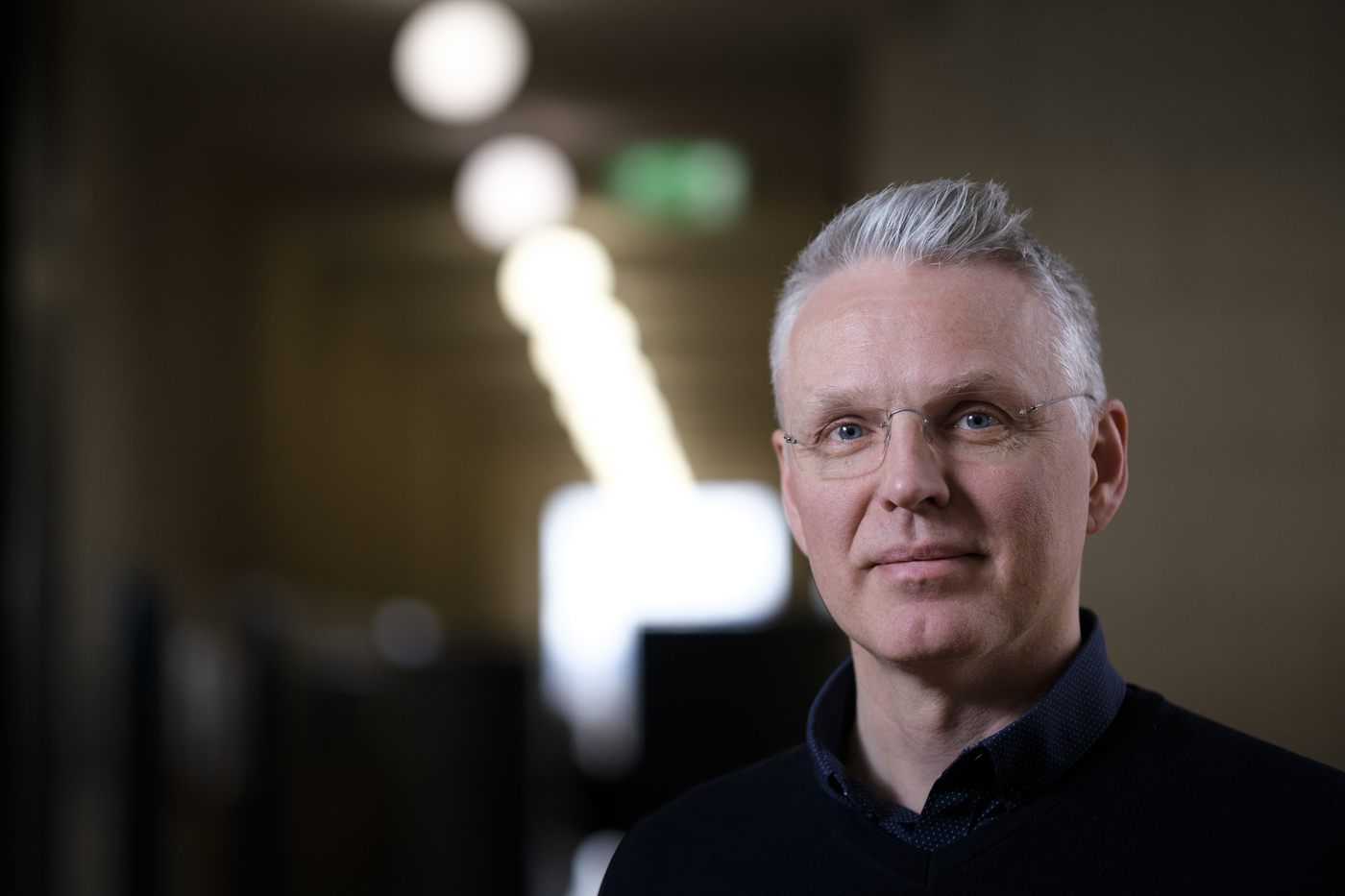One of the most important responsibilities of scientists across the world is finding solutions to problems in our society, the biosphere or our environment.
Benedikt Halldórsson is certainly living up to that responsibility, devoting his entire research career to the earthquakes that are almost a daily occurrence here in Iceland. Just this week in March 2023, the week this article was written, around 360 earthquakes were recorded by the Icelandic Meteorological Office. This is actually a lower number than the previous week, when around 500 were recorded.
Generally in Iceland, it is not until the earthquakes start getting bigger that people start to sit up and take notice. But there can certainly be grave consequences when powerful earthquakes strike near inhabited areas and infrastructure, as the world was recently reminded when we witnessed the horrific scenes in Turkey following massive earthquakes this February.
Everyone living on the Reykjanes peninsula – and indeed other areas of Iceland – noticed the seismic activity in the lead up to the eruptions in Geldingadalir in 2021 and 2022, although those living closest to the earthquakes were most affected. Earthquakes like these have been the subject of extensive research and seismic monitoring is used to create new models that can better evaluate the potential impact of future earthquakes.
Over the years, scientists have discovered various factors that cause earthquakes, e.g. magmatic movements and tectonic uplift that can sometimes signal the start of an eruption such as the one in Geldingadalir on Reykjanes peninsula. Iceland is positioned on a tectonic plate boundary, with half of the country drifting to the east and the other half to the west, pulling apart at the same speed as a fingernail grows. This causes tectonic stress to build up and when the crust ruptures under the pressure, this results in earthquakes. South Iceland and North Iceland experience the largest earthquakes in the country, usually at fairly regular intervals.
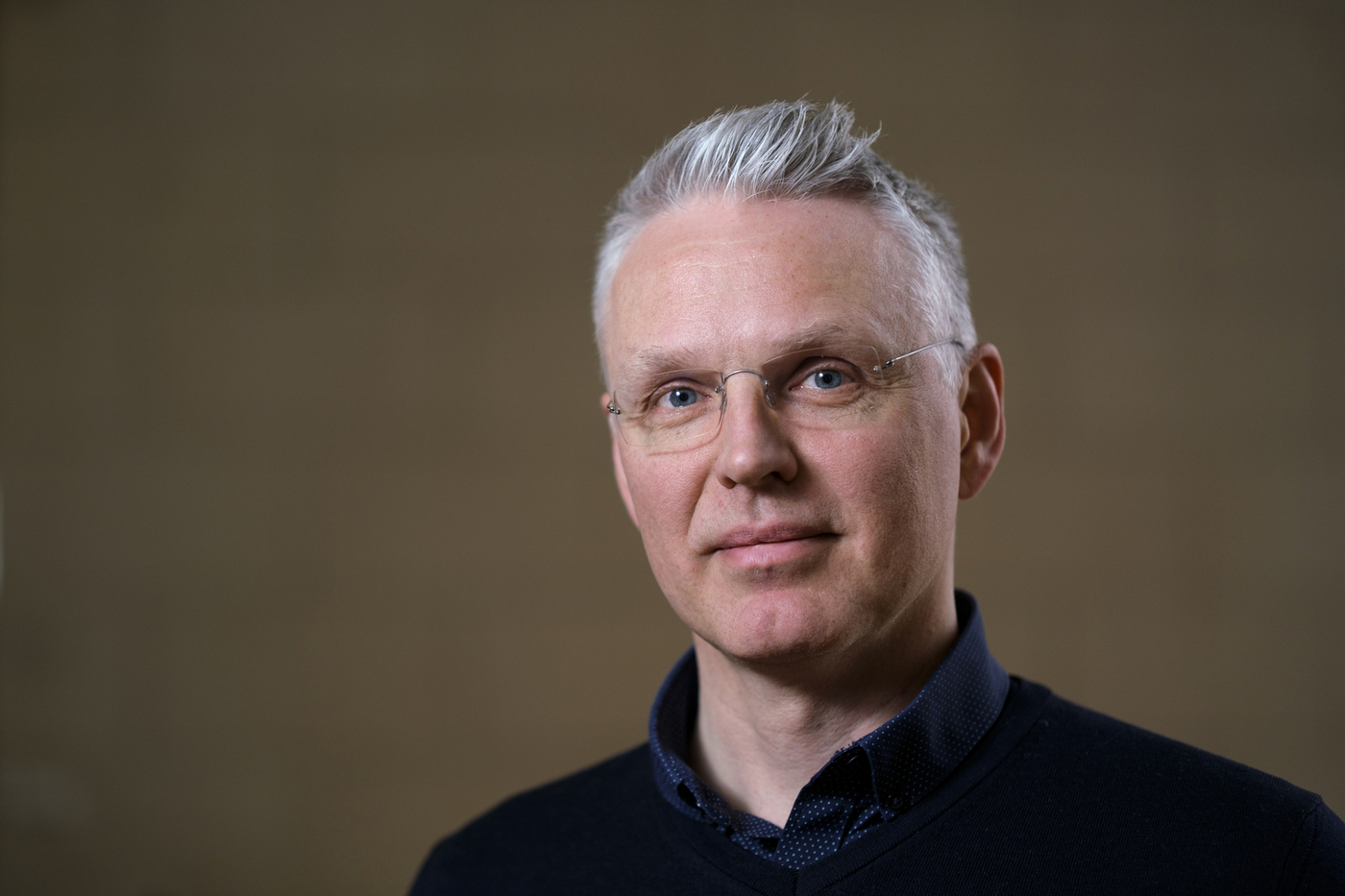
Benedikt Halldórsson is a research scientist at the Faculty of Civil and Environmental Engineering.
One foot underground
Because earthquakes are such a common occurrence here, and because of the potential they have to lead to various hazards – including volcanic eruptions and damage to infrastructure, earthquake research is essential for Iceland. Benedikt's research is particularly fascinating because it incorporates many different disciplines. Interdisciplinary research has been a growing strategic priority for UI; UI26 argues that urgent challenges, both current and future, require solutions based on interdisciplinary approaches.
"My research is in a field that you might call engineering seismology. That includes geology, seismology, geotechnics, building oscillation, and the impact of earthquakes on human environments, as well as their societal impact," says Benedikt, who is a research scientist at the Faculty of Civil and Environmental Engineering and leads a research team.
"I have an academic background in both geophysics and civil engineering and my PhD was in engineering seismology. So I've got one foot underground, where the earthquake occurs, and the other foot above ground in the human environment," says Benedikt, adding: "In my work, I need to have an understanding of how human structures behave in large earthquakes and what stakeholders need in terms of better risk management, as well as a thorough knowledge of seismology and how to make the best possible use of the latest research."
Benedikt explains that "engineering seismology bridges the gap between seismology and engineering, because both disciplines differ significantly in their focuses. For example, seismologists look at the earthquakes themselves. They measure vibrations in order to find out where the earthquake occurred, how strong it was, how the crust was ruptured, and its properties and causes in general. Engineers look at the buildings themselves, primarily how they are affected by the vibrations."
Both of these focuses are essential, but Benedikt has concentrated on researching specifically earthquakes that affect human structures, which would mainly be earthquakes of magnitude 5.0 or larger.
"But earthquakes also have more of an impact the closer you are to them. That impact diminishes at greater distances. So we also need to think about smaller earthquakes when they occur very close to inhabited areas. Earthquakes of magnitude 3.5 to 4.5 that occur at a shallow depth can be significant. Then we need to consider the really large earthquakes, around magnitude 7, that can have a considerable impact even at a great distance. But the earthquakes that have the most impact in Iceland are those that occur close to inhabited areas and are stronger than magnitude 6. There have been many such earthquakes in South Iceland," explains Benedikt.
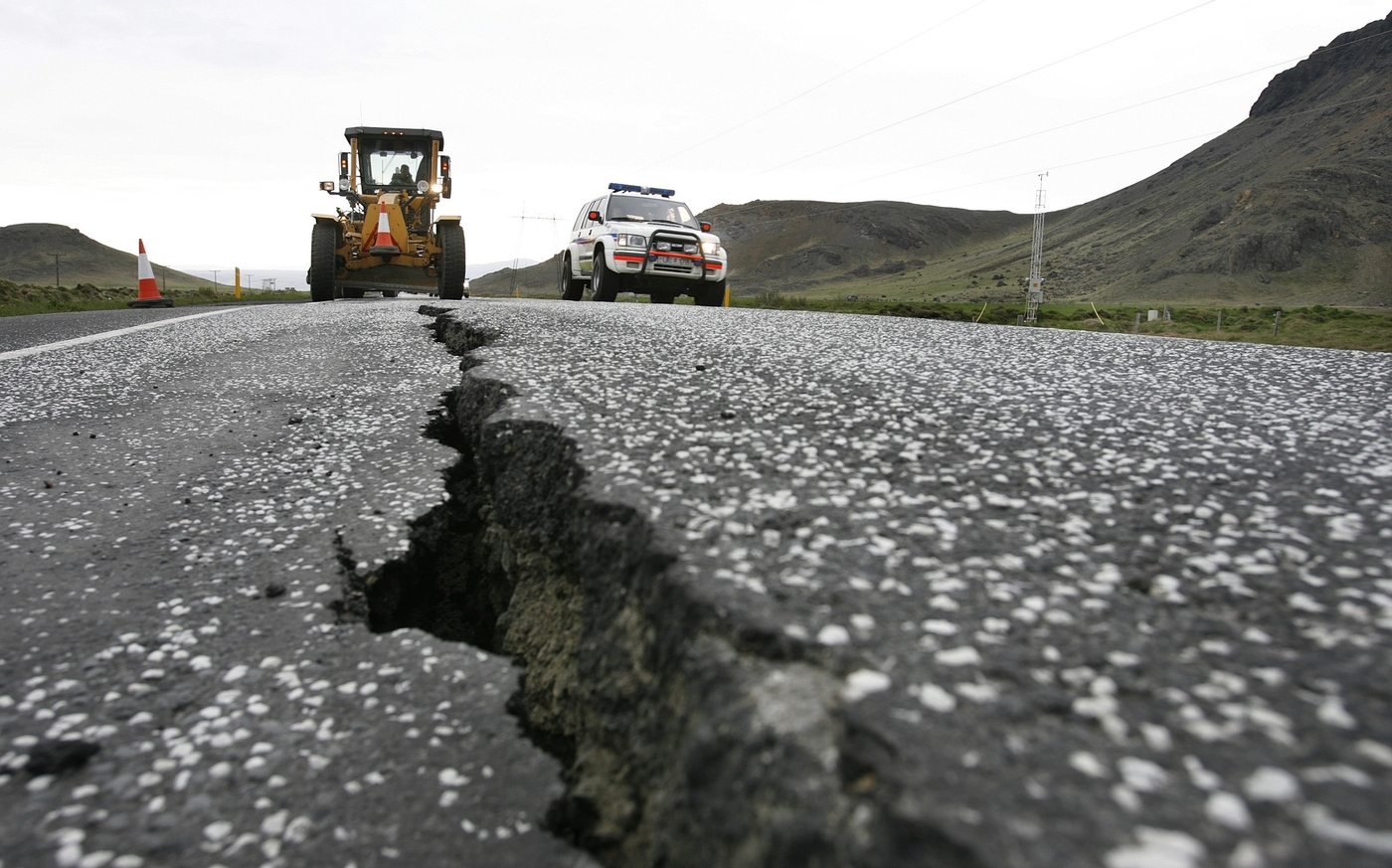
From the Ölfus earthquake on 29 May 2008.
Setting up seismograph arrays to improve our knowledge of earthquakes
Benedikt's passion for his area of expertise is evident in his choice of email address. Instead of his name, he uses the word skykkur, meaning ground motion on the earth's surface during an earthquake.
"My research has always focused on filling in the gaps in our knowledge when it comes to larger earthquakes in Iceland and how they affect the human environment. To this end, I have attempted to record earthquakes with measuring equipment in order to collect new data. I set up a dense network of seismographs in Hveragerði in the summer of 2007, the first of its kind in Iceland. We call it ICEARRAY, or Icelandic strong-motion array. There were 12 seismographs across an area of just over one square kilometre."
Benedikt explains that this array served three purposes: measuring seismic activity in an inhabited area, measuring earthquakes in several locations in order to assess variability, and providing new insight into what happens at the site of an earthquake.
"We managed to get unique measurements from close to the site of the Ölfus earthquake on 29 May 2008, which was the most destructive natural event in Iceland despite being only magnitude 6.3. Since then, I have set up similar dense seismograph arrays in other towns, for example in Húsavík in 2012. Húsavík is located in a large and very active seismic zone and that winter saw the largest earthquake swarms in North Iceland since the end of the Krafla fires," says the researcher.
"My latest seismograph array was set up in Grindavík at the start of the swarms that preceded the Fagradalsfjall eruption, as well as other arrays in Reykjanesbær and Hafnarfjörður. The data I have collected has proved invaluable to my research and of tremendous practical use."

South Iceland and North Iceland experience the largest earthquakes in the country, usually at fairly regular intervals.
Awarded many research grants
Research requires funding – especially research that is directly relevant to human safety and the impact of natural disasters on infrastructure. Benedikt has won many grants to fund his research projects since he started working at the University of Iceland in 2006. Since 2017, he has also been a part-time employee of the Icelandic Meteorological Office. These two institutions have collaborated on many vital projects concerning natural hazards. Benedikt's team has received various research and technical grants from the Icelandic Centre for Research, including an excellence grant, as well as five EU grants (Marie Curie, TURNkey, ChEESE, MEDiate and ChEESE-2P) and other grants from the National Power Company's Energy Research Fund, the Icelandic Road and Coastal Administration Research Fund and National Catastrophe Insurance.
Tackling challenges – finding solutions
Benedikt always has several projects on the go, providing a range of different findings.
"Our research has uncovered various new information in recent years. To put that information into context, it is worth remembering that evaluation of seismic hazards is largely dependent on three factors," says Benedikt. "Firstly, where the earthquakes occur and how large they could be. Secondly, how often earthquakes of a particular size could happen in an certain area. Thirdly, what could the impact be, how severe would the impact be, and how far would the affected area extend from the earthquakes themselves."
Benedikt explains that basic knowledge of seismic activity in Iceland is good, but that measuring of seismic activity began relatively recently, just around 30 years ago.
"Our historical seismic records actually only go back around 100 years, if we demand a certain level of precision. We have historical records of earthquakes going back to the time of the settlement, but the further back in time you go, the less precise the records are, especially regarding the size and location of earthquakes. Records like this are mainly used for statistical analysis of seismic hazards, but we recently designed a model for the Reykjanes and South Iceland fracture zone, which enables us to approach these analyses based on accurate physics."
Benedikt and his team have recently started work on a European project aiming at developing a system to quantitatively evaluate how resilient municipalities are to natural disaster. "A system like this could actually be developed for anybody, but this project focuses on municipalities. By thoroughly evaluating the systems they use to respond to emergencies, we can assess how services are affected in the immediate aftermath and how quickly they return to normal."
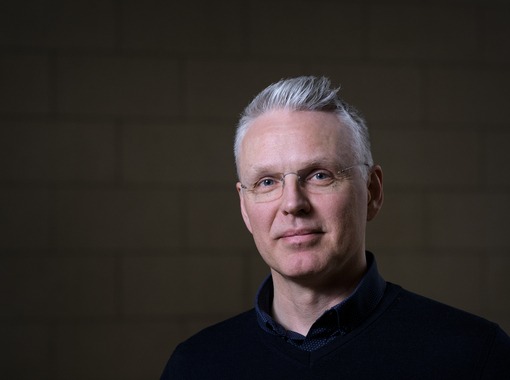
Developing specialised models for Icelandic conditions
Benedikt explains that in Iceland, we don't have measurements of earthquakes larger than magnitude 6.5 and the few models that have been used are of very limited use for the larger earthquakes that we know take place in the fracture zone, up to magnitude 7.
"Models from other places in the world are unhelpful and actually inaccurate, because seismic activity here differs from that generally seen in other countries. So we have created several new models for the impact of Icelandic earthquakes, using knowledge of the physics of large earthquakes."
In addition, these kinds of model have generally not given much weight to localised geology, although it is well known that geological strata can be extremely relevant. For example, there are many places in Iceland where the surface is covered by recent layers of lava.
"Although the lava is actually rock, the seismic activity we see on top of lava is stronger compared to activity in places with older bedrock. The biggest difference otherwise is in places with soft sediment layers, where ground motion is three times stronger than in earthquakes on hard rock. Our newest models have shed new light on these differences and we are now able to take that basic geology into account in our analyses of seismic hazards in Iceland. What enabled us to do this was the data from Hveragerði on the aftershocks of the Ölfus earthquake and the methodology we developed after processing that data. We then applied that methodology to monitoring of much larger areas."
Benedikt's team has also been researching the swarms and aftershocks that occur before and after large earthquakes, such as the earthquake swarms that we saw before the eruption in Geldingadalir.
"We have been looking at swarms and aftershocks from various different perspectives. Firstly, when swarms happen, like the ones we saw on Reykjanes peninsula in 2021, there can be such a high number of small earthquakes at any time that it is extremely difficult to pinpoint precisely where they originate. But it is very important that we can do that when we're talking about magmatic movements, like in the lead up to the Fagradalsfjall eruption. Seismograph arrays allow us to use new methods that provide a clearer view of seismic activity in real time."
"Then we've been looking at swarms in the context of seismic hazards, because risk levels increase temporarily depending on how a swarm progresses. We have used statistical models to quantitatively assess whether swarms in, for example, South Iceland all behave in the same way or not. This knowledge could potentially be harnessed for an earthquake warning system, but any system like that would need to define uncertainty. Uncertainty assessment is vital. It's then up to stakeholders like the Department of Civil Protection to determine whether the uncertainty is low enough for such a system to be useful," says Benedikt, adding that "the only thing we know for sure is that we certainly won't succeed if we don't try."
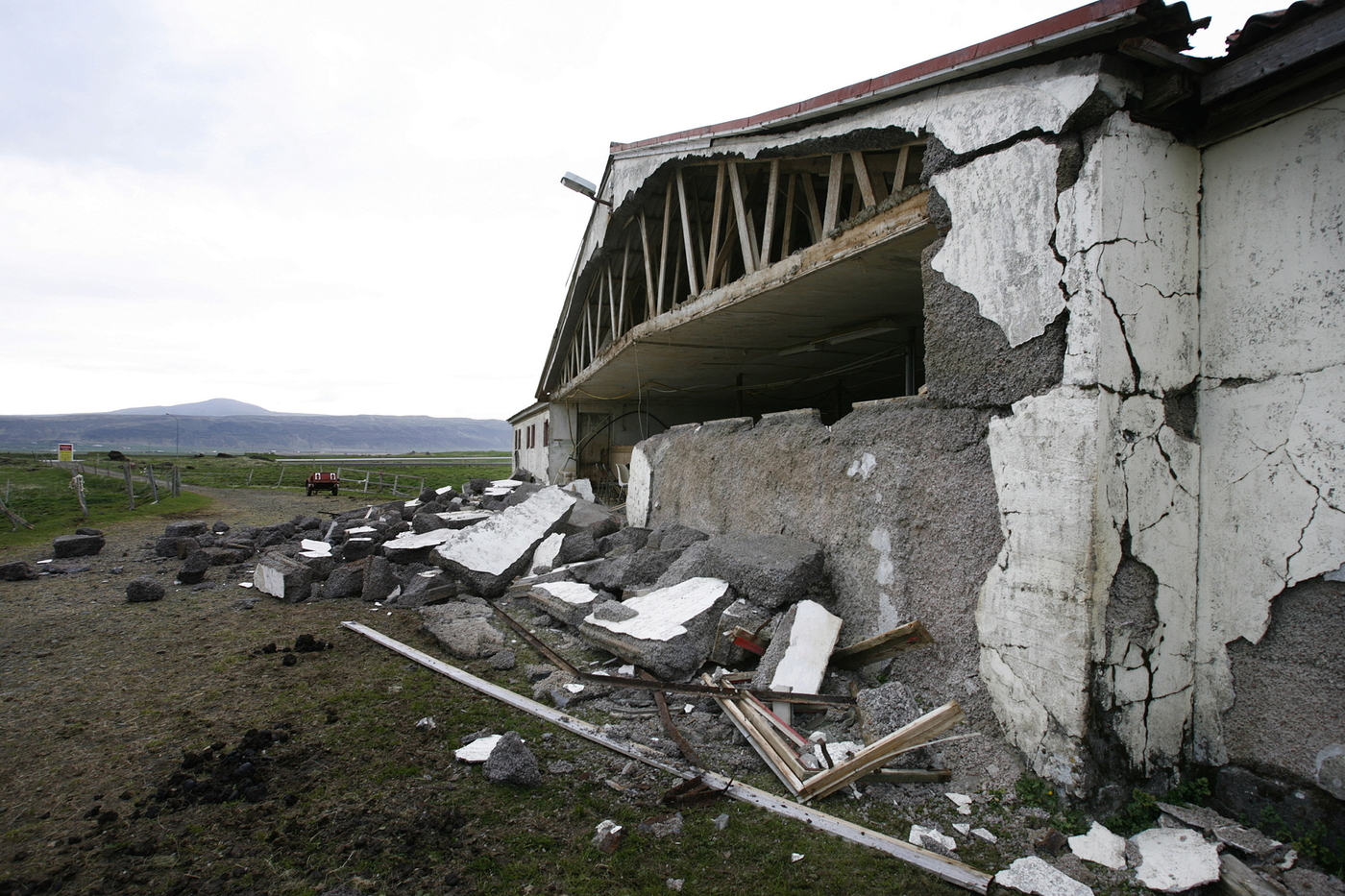
Desperate need for review and improvement of seismology knowledge
Benedikt and his team have recently started work on a European project aiming at developing a system to quantitatively evaluate how resilient municipalities are to natural disaster.
"A system like this could actually be developed for anybody, but this project focuses on municipalities. By thoroughly evaluating the systems they use to respond to emergencies, we can assess how services are affected in the immediate aftermath and how quickly they return to normal."
The team is also using improved knowledge and models to rethink basic seismic hazard evaluation and, not least, to calculate the uncertainty of the evaluation itself. This will give scientists a more accurate idea of how much faith to put in the evaluation.
"It's our responsibility as experts to conduct the best evaluations we possibly can, but at the same time we need to admit, to ourselves and to others, the level of uncertainty involved. That information is vital to the stakeholders who will use the evaluation and uncertainty level to determine risk, which could affect the response if and when earthquakes occur."
A collector by nature
Like many scientists, Benedikt is a collector by nature, not of stamps or anything like that but of data: data that can help us learn more about the nature of earthquakes. When we asked him about the significance of his research, he paused for a moment before replying:
"There probably is no simple answer to that question, but the first thing to come to mind is that all those measurements I have collected have made me rethink, or more closely examine, what I thought I knew about earthquakes, seismic waves, the relevance of geological strata, and the impact of earthquakes in general. This rethinking has brought up new questions and led to many research projects and new findings."
In brief, Benedikt argues, the practical application of research is about ensuring that the best available knowledge in engineering seismology is incorporated into formal seismic hazard evaluations in Iceland.
"In other words, the ability to say with a reasonable degree of precision how likely it is that seismic activity will occur at any given location in Iceland, in particular known seismic zones. This is vital for the design of infrastructure and assessing the risk of earthquake damage."
Improving protection of people and infrastructure in earthquake responses
Benedikt's research is what is known as basic research, that will primarily be useful in the future. All his studies are ultimately aimed at making people safer when earthquakes occur.
"If we are better able to define seismic hazards and the level of uncertainty, we can achieve more efficient infrastructure design and thereby more efficient risk management. The studies I have led have also created jobs for many people, just over half of whom are women, and it is wonderful that we have been able to increase female representation in this field. Our findings have indirectly inspired other projects, allowing younger researchers, alongside those of us who are more experienced, to contribute to the continuous development of new knowledge. These are the best kinds of research teams, in my opinion, especially when it comes to interdisciplinary research, and the work we do is enormously rewarding."




